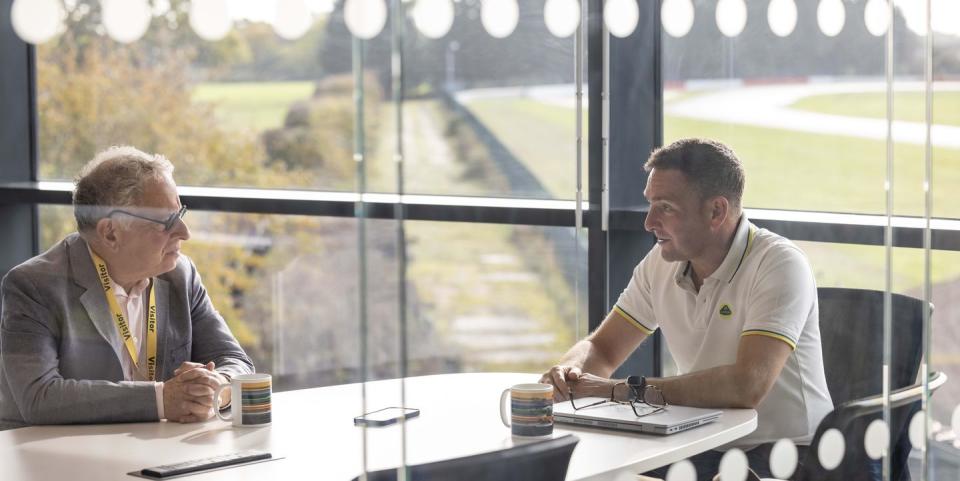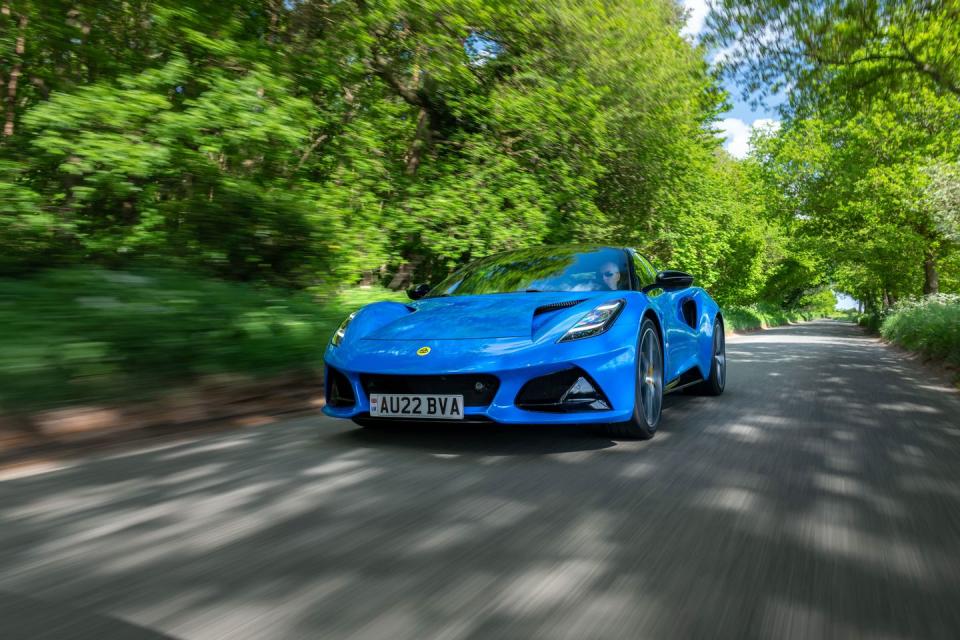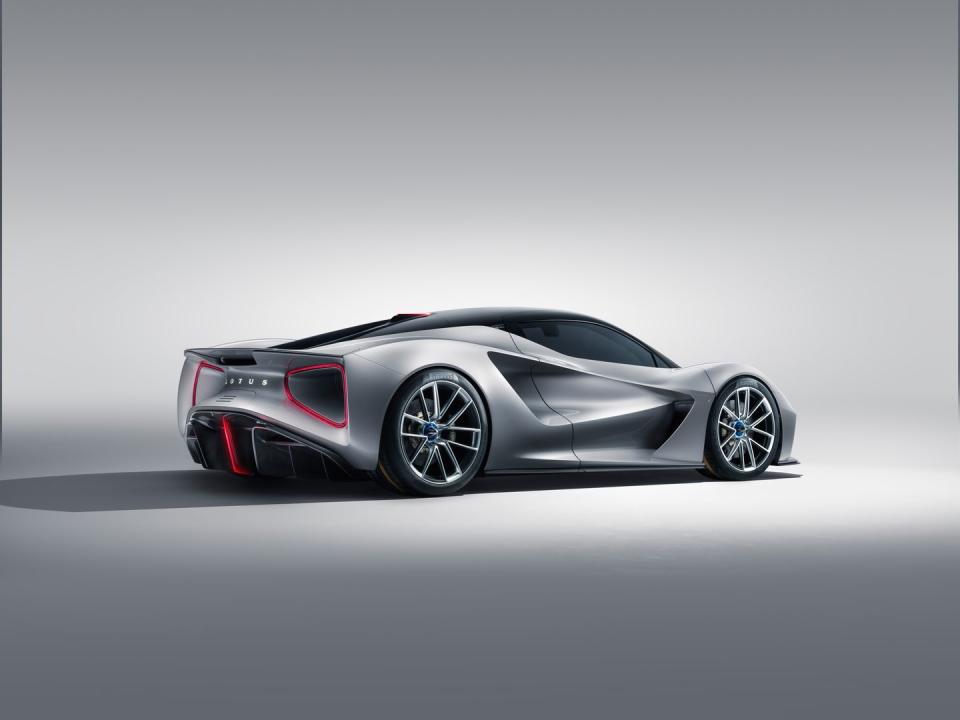Matt Windle Is Bullish about Lotus's Future Prospects

Change has come to Lotus Cars, as a trip to its longtime home in Hethel—set amid the gentle, rolling farmland of Norfolk, England—soon reveals. New (since 2017) owners, China's Geely have infused billions, enabling Lotus to commit to an all-electric future, dramatically increasing production, and more than doubling its number of workers in England, while launching an electric SUV, Eletre, to be built at a massive new factory in China's Wuhan, capable of churning out 150,000 "lifestyle" cars annually, only slightly less than Lotus's total production over its entire 72-year-history.
Company executives can also speak now about future model plans in ways that don't elicit disbelieving guffaws, such as in 2010 when one briefly tenured Lotus captain, Dany Bahar, rolled out five half-baked "new" future models at a Baldwin brother–festooned Hollywood launch event, not long before departing the cash-strapped company by trap door. New managing director Matt Windle assumed the post in 2021, having worked at Lotus as an engineer and also at Tesla, which orientation and experience, one suspects, bode well for his priorities. He spoke with Jamie Kitman in an airy office in one of the company's new buildings.
MW: Welcome to Lotus. This building we sit in, the Chapman Production Centre, is all brand new. Over the last three years at Lotus, we've spent a hundred million (pounds) in facilities investment and on three factories: One that we sit in here is for Emira. One over there [pointing] for Evija, and then we've also got a new factory in [nearby] Norwich that's doing all of our chassis and a lot of our mechanical stuff.
The pace of change has been massive. Hopefully you see that from the last time you were at Lotus, the difference around the site and the preparation. But it's not just what you can see on the surface. It's IT systems, the high-voltage system—we didn't have enough power coming into the site. We've done all the roadways, we've done a new staff restaurant, and all those types of things which have been really important in bringing this business up to date, ready for the challenges that we've got going forward.
C/D: Can you describe the state of the U.K. car business, of which Lotus is a part—and increasingly a large part?
MW: It's as difficult as it's ever been. It’s not just COVID, but Brexit as well. Our cost of dealing, cost of invoicing and logistics have gone through the roof, [worsened by fuel] costs because of the war in the Ukraine, and inflation. So, it's as hard as it gets. But we're still smiling, we're still trying to go strong. And I think the element that is positive for us is the strength of the order book—so strong for Emira particularly—that it gives you the confidence that you just need to keep fighting through these issues and keep going, really.
You may have heard we have a little bit of political turmoil at the moment. You can kind of come [to Britain] every six weeks and see a different prime minister. So the outlook for us as far as relationships with the government and things is shifting as well. But that's where I can see that Lotus is blossoming, that we are having those interactions with the government now. They want to know what our strategic plans are because we are going to be the first volume sports car manufacturer in the world that commits fully to go into battery electric vehicles. Emira is our last internal-combustion mass-production car. And that aligns perfectly with what our government policies are around zero emissions and the industrial revolution, if you like, to the green economy.
C/D: Electric is Lotus's future and we'll get to that, but what about the Emira?
MW: Well, we've taken over 10,000 orders for the Emira, and a third of those are from the States. We launched the car just before Goodwood last year. And between then and Goodwood this year we sold more cars in one year than we sold in the previous six years combined. So yeah, as far as sales goes, it's very strong.

I was out [in the States] there for the Lotus Owners Gathering that was in West Virginia. And a lot of the owners there had their first drive of the car, and they were really, really pleased with it as well. [The U.S.] is an incredibly important market for us. I've been out there quite a bit. Know the team over there. We're expanding the dealer network over there as well. For us, it's an area of growth, a market that we really want to develop. We need to grow the team.
C/D: The Evora was a great car, but didn’t sell especially well in the States. We loved it, but there were many who were convinced that it didn’t warrant a luxury price tag. How is the Emira going to change that equation?
MW: We've got a lot of work to do, we recognize that. You asked the question about whether the brand can take it to that next level of luxury. And it can. But we realized we were starting from a pretty low base. I agree on Evora as well: It was an amazing car to drive, but it was a bit of a compromise to own, wasn't it? And we realized if we were going to grow our volume to the ambitions we have for the sports cars, we needed to make something that was more accessible.
The Emira's on the same wheelbase as Evora, so you could say it's a similar car, but everything's new on it. And what we've looked to doing is ingress/egress, storage, cupholders, which obviously was always a criticism, but we've got cupholders now. The interior is brand new, electrical architecture with displays and information that you would expect. It's a car like people are used to, but then under the skin [it's a Lotus].
Quality was a big, big thing for us that we knew we needed to step up if we were going to go into a volume market. So we've invested in fully automated assembly. It's not a monocoque, but if you want to call it the "monocoque" part of the car, the chassis to the body sides to the bulkheads to the roof, that's all automated in production. And we're seeing accuracy of that at about 99.7 percent against where it should be as a target [versus an estimated 85 percent before.] You probably won't get any better than that. And so we know that core of the car is absolutely spot on. And then from there building out, it's given us a much better-quality car, with fully automated, cloud-based inspection systems that can spot defects or misalignment.
We have new electrical systems, LED lights, all of those comforts that everybody expects is now on the Emira. There is a bit of a price to pay with the weight because of the [new] content we put in there—it's around a 1400-kilo (3087 pound) car. To compensate for that, we widened the track, we've increased the wheel size. So dynamically it's as good as an Evora. It's not quite as light, but it's as good as an Evora, and with those comforts.
C/D: With some notable exceptions, dealer support and quality in the U.S. haven't been anything to write home to mother about, either.
MW: I can understand the frustration. Because [our dealers] really haven't made much money out of us over the last 25 years. So why would you get excited if you know can sell some Ferraris and make some margin, you've got a Lotus that you're not going to make much on? But again, we understand where we're coming from, and I can't apologize for what's gone before, I can only look forwards. But we've invested a lot in the dealers this year. We had a global dealer conference here so we invited them over, brought them into our confidence, showed them the Type 133 which will launch next year, the E-segment sedan that's coming, off the Lambda platform [shared with the Eletre] and fully electric.
They came here and then from nothing [to sell], they were looking at the Evija, Emira, and Eletre that are being launched in March, and what's coming next year. The dealers I've met traveling around the States seem really good, and we just need to give them the opportunity by giving them the product. You quite rightly said Lotus's resurgence will be through product, it won't be through talking about it, and I think, dare I say, that's been tried a bit in the past and didn't work. So we just need to get the products that are out there that are right.

C/D: Some of the wags in the British press corps I've been talking to since arriving in the U.K. have suggested that the Evija isn't selling. I've read otherwise. What is the truth?
MW: Well, we have sold Evijas. And the [limited edition] Fittipaldi Evijas are pre-sold. But the program I always talk about is the one that got impacted most by COVID, which is where we started. Evija was out testing, we were in America, we were Germany with it in 2020, and we had to bring it back and it kind of sat on the shelf for about a year.
So, it's only now that our customers have driven it. Fittipaldi customers were here at the weekend, they drove the car. The first time we put customers in the car, and I can tell you they got out very happy with their purchases.
And yeah, selling cars in that [price] bracket ($2.1 million in the U.S.) is different. It's not like the Emira where you could pick up hundreds of orders in a week. It's a slow process, and it's a lot of money. People want to know that they're going to keep the value in their money.

 Yahoo Autos
Yahoo Autos 